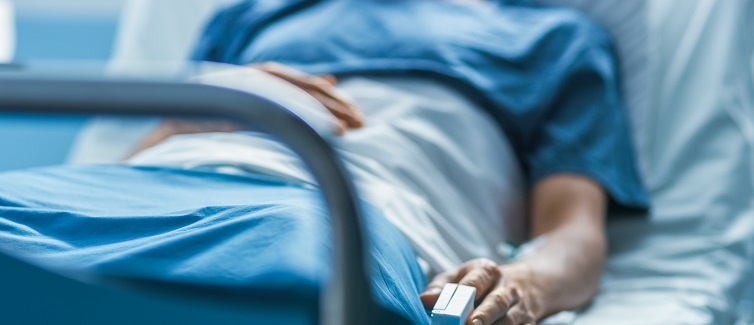If you do not suspect you were exposed to COVID-19, but you have emergency or urgent care needs, it’s important you don’t put off medically necessary care. Heart attack and stroke symptoms, broken bones, severe pain, and prolonged bleeding are all examples of conditions that require immediate treatment.
Never Miss a Beat!
Subscribe to Our HealthBeat Newsletter!
Thank you for subscribing!
You can now select the specific newsletters you'd like to receive.
You are already subscribed.
Subscribe to more newsletters in our email preference center.
Sorry, an error occurred. Please try again later.
Get Healthy Tips Sent to Your Phone!
Is It Safe to Visit the Emergency Department During COVID-19?
If you need to visit the emergency department, our COVID-19 prevention steps include:
- Entrance Screening: We screen all visitors, patients, and staff upon entry to any UPMC hospital.
- Visitor Restrictions: To protect patients and staff and to limit the chance of exposure to illnesses including COVID-19, UPMC is temporarily restricting visitors. Please refer to the UPMC Visitation Restrictions webpage the latest information on our current policies.
- Personal protective equipment (PPE): We have enough masks, gowns, gloves, and other protective equipment to keep our patients and staff safe. We also have clean, well-equipped facilities with enough capacity to treat patients. Our health care workers will provide the expert care you’re accustomed to receiving at UPMC.
- Facemasks: We provide facemasks to our health care workers, vendors, patients, and visitors at entry. We require their use at all times in our facilities.
- Cleaning: All furniture, doorknobs, elevator buttons, and other high-touch items are cleaned and sanitized regularly with a hospital-grade disinfectant.

When Should I Go to the Emergency Department?
If you think you are experiencing a life-threatening condition, call 9-1-1 or go to the emergency department nearest you.
Reasons to visit the emergency department include:
- Severe breathing problems.
- Chest pain.
- Heart attack.
- Stroke.
- Seizures.
- Serious trauma or injury.
- Severe bleeding.
- Loss of consciousness.
- Severe abdominal pain.
- Severe vomiting.
- Severe diarrhea.
- Severe headache.
Where Can I Go for My Minor Illness/Injury?
UPMC Urgent Care locations are open to treat minor illnesses and injuries.
Most locations are open from 8 a.m. to 8 p.m. daily, with no appointment necessary.
They provide immediate treatment for non-emergency conditions, including:
- Asthma and allergies.
- Colds and flu.
- Coughs, sore throats, earaches, and sinus infections.
- Cuts and scrapes.
- Infections including pink eye and urinary tract.
- Sprains, strains, minor broken bones, and simple fractures.
- Skin conditions from rashes to poison ivy.
- Vomiting and diarrhea.
Disclaimer: At UPMC HealthBeat, we strive to provide the most up-to-date facts in our stories when we publish them. We also make updates to our content as information changes. However, education about COVID-19 can shift quickly based on new data, emerging variants, or other factors. The information in this story was accurate as of its publish date. We also encourage you to visit other reliable websites for updated information, including the Centers for Disease Control and Prevention (CDC), Food and Drug Administration (FDA), and your state and local governments.
Editor's Note: This article was originally published on , and was last reviewed on .
About Trauma & Emergency Medicine
Emergencies can happen in the blink of an eye or in a heartbeat. And when they do, minutes matter. UPMC’s Emergency Medicine and Trauma Care services are ready to provide world-class care, no matter how serious your emergency. All our Emergency Departments have a full-time staff of emergency specialists at the ready 24 hours a day. We use advanced technology to diagnose and treat your condition and coordinate with your doctor to provide the best care possible. We also have specialized trauma care at several of our hospitals. If you or a loved one is experiencing a medical emergency, call 911 or visit the nearest Emergency Department.
